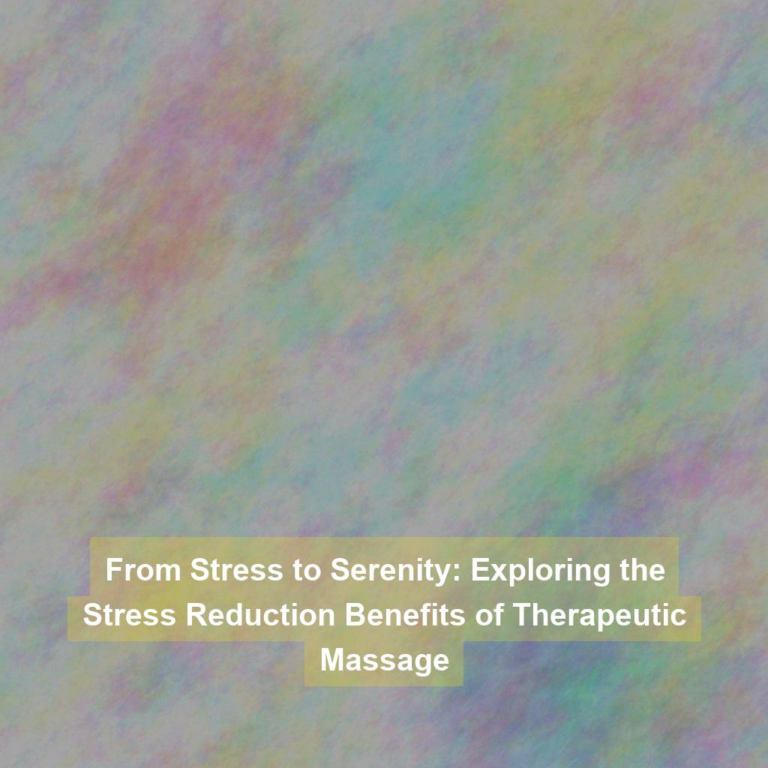Have you ever wondered how elite athletes seem to recover from injuries and muscle soreness at an accelerated rate? It’s not just genetics or luck; there’s a science behind it.
Sports massage therapy has been gaining traction as a crucial element in the recovery process for athletes of all levels. But what exactly does sports massage therapy entail, and how can it benefit you, even if you’re not a professional athlete?
Whether you’re a weekend warrior, a fitness enthusiast, or a competitive athlete, understanding the potential of sports massage therapy could be the missing piece in your training and recovery regimen.
Benefits of Sports Massage Therapy
Sports Massage Therapy enhances recovery by promoting circulation, reducing muscle tension, and improving flexibility. By increasing blood flow to the muscles, this type of massage helps deliver oxygen and nutrients while removing waste products, leading to quicker recovery from intense physical activity.
The manipulation of soft tissues also aids in reducing muscle tension, which can occur due to overuse or repetitive strain. This can alleviate discomfort and soreness, allowing you to get back to your training routine more quickly.
Additionally, Sports Massage Therapy can improve flexibility by targeting specific muscle groups and enhancing their range of motion. This can be particularly beneficial for athletes looking to prevent injuries and improve their overall performance.
Techniques Used in Sports Massage
Experiencing the benefits of Sports Massage Therapy requires an understanding of the specific techniques used to promote recovery and enhance performance.
One of the key techniques employed in sports massage is effleurage, which involves long, sweeping strokes that help to warm up the muscles and increase blood flow. This technique is often used at the beginning of a session to prepare the muscles for deeper work.
Another important technique is petrissage, which consists of kneading and lifting the muscles to release tension and improve flexibility. Sports massage therapists also utilize friction, a technique involving deep, targeted pressure applied across the grain of the muscles to break down adhesions and scar tissue. This can help to alleviate pain and restore normal movement patterns.
Additionally, tapotement, a rhythmic percussion technique, is used to stimulate the muscles and invigorate the body.
Preparing for a Sports Massage Session
Before your sports massage session, it’s important to prepare your body and mind for the upcoming treatment. Start by hydrating well throughout the day leading up to your session. Proper hydration helps to improve the effectiveness of the massage and aids in the elimination of toxins from your body. Additionally, it’s advisable to avoid eating a large meal right before your session to prevent discomfort during the massage.
Take a few moments to mentally prepare for the massage. Relaxation is key to reaping the full benefits of the treatment. Consider practicing some deep breathing or meditation to help calm your mind and ease any pre-session jitters. Arrive a bit early to your appointment to allow for a few minutes to unwind and mentally transition into a more relaxed state.
Wear comfortable clothing to your sports massage session, as you’ll likely be asked to change into attire that allows the therapist access to the areas being treated. Lastly, communicate openly with your massage therapist about any specific areas of concern or discomfort, as well as your desired outcomes for the session. This will help ensure that you get the most out of your sports massage experience.
Post-Sports Massage Care and Recovery
After your sports massage session, it’s important to prioritize your post-care recovery to maximize the benefits of the treatment.
Begin by hydrating yourself with water to flush out toxins released during the massage. This will also help prevent soreness and fatigue.
Gentle stretching can further enhance the effects of the massage and promote flexibility. Focus on areas that were targeted during the massage to maintain the benefits and prevent muscle tension from returning.
Applying ice to any areas that feel tender can reduce inflammation and soothe the muscles. Additionally, taking a warm bath with Epsom salts can aid in relaxation and alleviate any residual soreness.
It’s normal to feel relaxed or even a bit sleepy after a massage, so allow yourself some time to rest and recuperate. Listen to your body and avoid strenuous activities for the remainder of the day to allow the muscles to fully benefit from the treatment.
Integrating Sports Massage Into Your Training Routine
After prioritizing your post-care recovery, it’s important to consider integrating sports massage into your training routine to continue maximizing the benefits of the treatment. Incorporating sports massage into your routine can help prevent injuries, reduce muscle soreness, and improve flexibility and range of motion. It’s recommended to schedule regular sports massage sessions, especially during intense training periods, to aid in muscle recovery and overall performance.
When integrating sports massage into your training routine, consider scheduling sessions strategically. For instance, scheduling a sports massage session after a particularly challenging workout or event can help alleviate muscle tension and promote faster recovery. Additionally, incorporating sports massage into your routine on rest days can aid in muscle relaxation and rejuvenation, preparing your body for the next training session.
Furthermore, communicating with your sports massage therapist about your training schedule and specific areas of concern can help tailor the sessions to your individual needs. This personalized approach ensures that the sports massage aligns with your training goals and addresses any areas of muscle tension or discomfort, ultimately optimizing your overall training routine.
Conclusion
So, next time you’re looking to accelerate your recovery and improve your athletic performance, consider integrating sports massage therapy into your training routine.
With its numerous benefits, specialized techniques, and proper preparation and post-care, sports massage can be a game-changer for athletes of all levels.
Don’t wait any longer to experience the rejuvenating effects of sports massage therapy. Your body will thank you.







